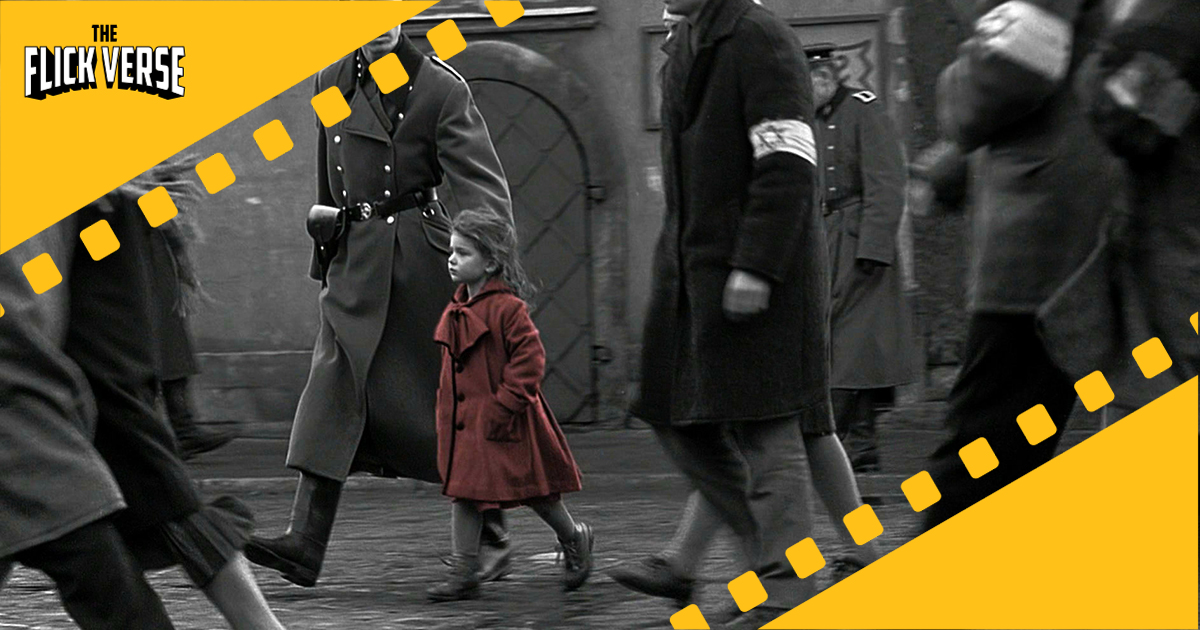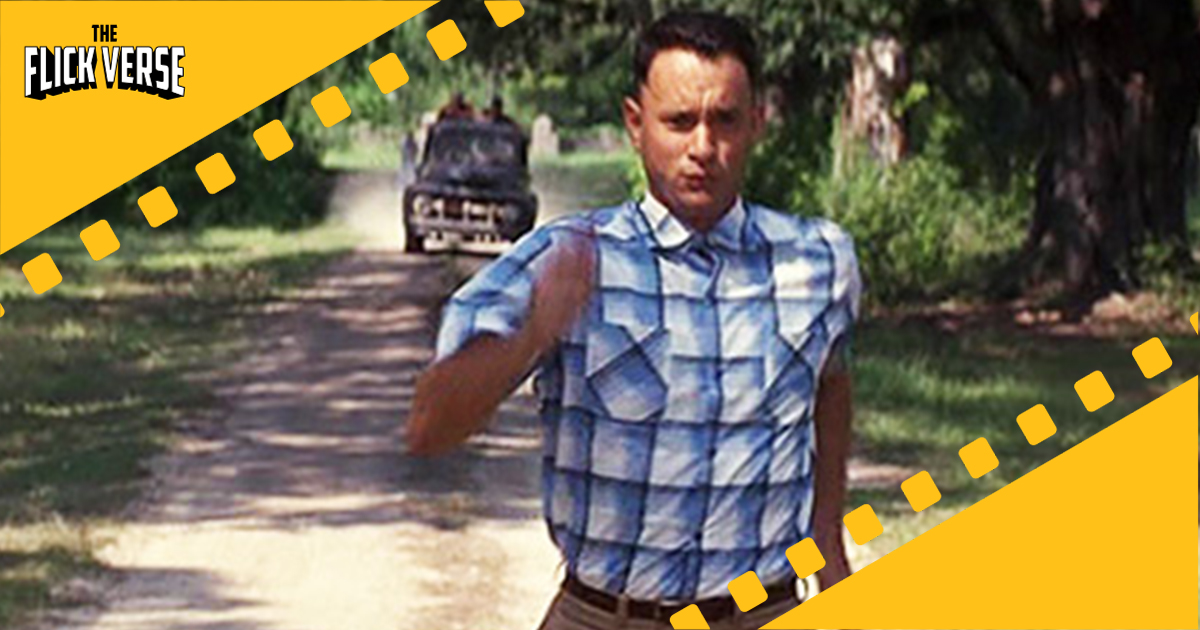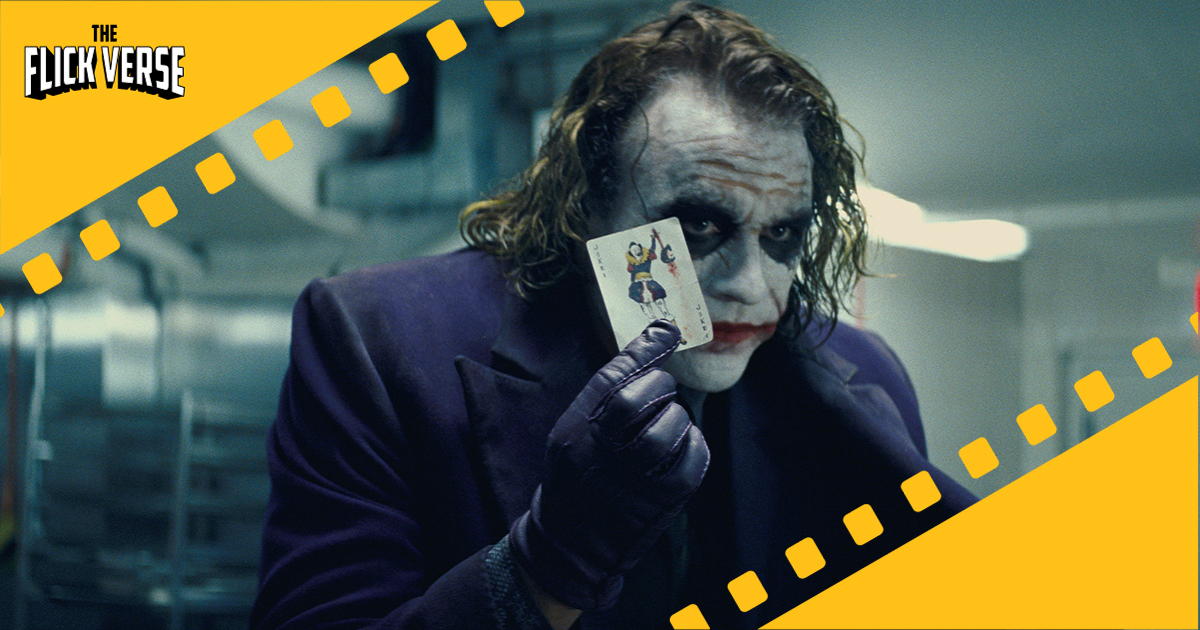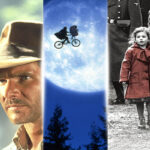
7 Must-Watch Movies of All Time
These selections not only highlight the best movies but also include good movies to watch that have touched hearts, sparked imaginations, and left a lasting impact on cinema. From epic trilogies like “The Lord of the Rings” to groundbreaking films such as “Inception,” this guide promises to showcase cinematic masterpieces that are essential viewing for any movie enthusiast.
1. The Shawshank Redemption

Overview and Setting:
Directed by Frank Darabont, “The Shawshank Redemption” (1994) is a compelling American prison drama based on Stephen King’s 1982 novella ‘Rita Hayworth and Shawshank Redemption’. The film unfolds within the grim walls of Shawshank State Prison in Ohio, highlighting the story of Andy Dufresne, played by Tim Robbins, a banker wrongfully imprisoned for the murder of his wife and her lover. This cinematic piece beautifully captures themes of hope, friendship, and the resilience of the human spirit against the backdrop of a corrupt prison system.
Key Characters and Plot Points:
- Andy Dufresne (Tim Robbins): Despite being sentenced to life, Andy maintains his innocence and harnesses hope for a future beyond the prison walls. His dream of starting anew in Zihuatanejo, a coastal city in Mexico, symbolizes the undying human spirit.
- Ellis ‘Red’ Redding (Morgan Freeman): Andy’s close friend and a contraband smuggler who narrates the story, providing insights into life within Shawshank and the bond he forms with Andy.
- Warden Samuel Norton (Bob Gunton): Andy becomes entangled in a money-laundering operation led by the corrupt warden, showcasing the systemic corruption within Shawshank.
- Memorable Scenes: Highlights include Andy risking his life to secure beers for his fellow inmates and broadcasting an Italian opera over the prison’s loudspeakers, moments that underscore the film’s exploration of freedom and defiance.
Legacy and Impact:
- Despite its initial box office disappointment with earnings of only $16 million, “The Shawshank Redemption” found its audience through video rentals and broadcasts on TNT, ultimately becoming one of the most beloved films in cinema history.
- The film received seven Academy Award nominations and was selected for preservation in the National Film Registry by the Library of Congress in 2015, a testament to its enduring significance and impact on both audiences and critics alike.
- Notable for its powerful dialogue, including the iconic line “Get busy living, or get busy dying,” the film delves into themes such as life’s inherent unfairness, the power of persistence, and the crucial role of hope. It presents a nuanced view of freedom as a state of mind rather than a physical condition, suggesting that the title ‘The Shawshank Redemption’ may refer more to Red’s journey towards redemption than Andy’s.
This detailed exploration of “The Shawshank Redemption” underscores its status as a cinematic masterpiece, offering profound insights into the human condition through its compelling narrative, memorable characters, and thematic depth.
2. The Godfather

“The Godfather,” directed by Francis Ford Coppola, marks a cornerstone in cinema history, celebrated for its profound influence on the film industry and culture at large. Released 50 years ago, this masterpiece is not only regarded as one of the greatest films ever made but also a pivotal moment in cinematic storytelling.
Historical and Cultural Impact:
- Innovative Cinema: The film introduced a new, rough production style to Hollywood, setting a precedent for future filmmakers and popularizing the mafia genre. Its influence is evident in the works of directors like Martin Scorsese and Brian De Palma.
- Iconic Characters and Performances: Marlon Brando’s portrayal of Vito Corleone and Al Pacino’s role as Michael Corleone not only defined their careers but also the archetype of the movie mobster for generations to come. Brando’s role, in particular, became synonymous with the classic mobster image.
- Legacy in Pop Culture: “The Godfather” has left an indelible mark on pop culture, inspiring acclaimed TV shows such as “The Sopranos,” “Breaking Bad,” and “Succession.” Its phrases like “an offer he can’t refuse” have permeated into everyday language, impacting even the FBI and real-life mobsters.
Cinematic Techniques and Themes:
- Visual Storytelling: The director of photography, Gordon Willis, utilized existing technology to craft a distinctive look for the film, characterized by deep layers of black and shadow. This innovative approach contributed to a unique color film aesthetic, enhancing the movie’s dramatic and thematic depth.
- Complex Narratives: At its core, “The Godfather” explores themes of loyalty, greed, family dynamics, and the blurry lines between right and wrong. This sophisticated narrative allowed mafia and gangster films to flourish, becoming box-office successes.
Influence on the Film Industry:
- Marketing and Distribution: Following the success of “The Godfather,” the approach to marketing and distributing movies shifted, with wide releases becoming a standard practice. This strategy helped to maximize audience reach and box office revenue.
- Revival of Cinema: At a time when the movie industry was experiencing a downturn, “The Godfather” reinvigorated public interest in cinema. Based on Mario Puzo’s bestselling novel, the film’s intricate story and memorable characters captured the imagination of viewers worldwide, contributing significantly to the revitalization of the film industry.
- Through its groundbreaking narrative, stylistic innovations, and cultural impact, “The Godfather“ continues to be a seminal work, shaping the landscape of modern cinema and remaining a must-watch movie for generations.
3. Schindler’s List

Directed by Steven Spielberg and released in 1993, “Schindler’s List” is a powerful portrayal of a dark chapter in human history, based on the novel ‘Schindler’s Ark’ by Thomas Keneally. The film tells the compelling story of Oskar Schindler, a German industrialist who saved over 1,000 Jewish people during the Holocaust, showcasing Spielberg’s shift towards more serious storytelling. Here’s a closer look at the impact, production, and historical context of “Schindler’s List”:
Impact and Recognition:
- Earned over $300 million at the box office.
- I won seven Academy Awards, including Best Picture and Best Director.
- Selected for preservation in the United States National Film Registry in 2004.
- Spielberg founded the USC Shoah Foundation, to enhance Holocaust remembrance.
Historical Context and Accuracy:
- Released alongside significant Holocaust remembrance events in the U.S., such as the opening of the United States Holocaust Memorial Museum.
- Critics have noted historical inaccuracies, such as the portrayal of Itzhak Stern and the timing of Schindler’s arrest.
- The real Schindler had selfish motivations initially but grew to care for his Jewish workers, a complexity that adds depth to his portrayal.
Production Insights:
- Filmed in black and white to create a sense of timelessness and focus on personal stories within the historical context.
- The liquidation of the Kraków ghetto sequence, notable for its use of handheld cameras and a flash of color—a little girl in a red coat, stands as the film’s most striking sequence.
- The emotional toll on Spielberg during production in Poland was significant, with a cast that included Liam Neeson, Ben Kingsley, and Ralph Fiennes.
“Schindler’s List” not only marked a pivotal moment in Spielberg’s career, establishing him as a significant Jewish filmmaker but also inspired a surge in Holocaust studies and storytelling. Through its poignant narrative and visual storytelling, the film continues to inspire and educate, making it an essential movie to watch.
4. Forrest Gump

“Forrest Gump“ emerged as a cinematic phenomenon upon its release in 1994, captivating audiences and critics alike. It’s a film that intertwines the simplicity of life with the complexity of American history, making it a multifaceted masterpiece that has left an indelible mark on pop culture. Here’s a deeper dive into its legacy, themes, and cultural impact:
Commercial Success and Awards:
- Dominated the box office for several weeks, showcasing its widespread appeal.
- Garnered six Oscars, including Best Picture, Best Actor for Tom Hanks, and Best Director for Robert Zemeckis, underscoring its critical acclaim.
- Its success was notable for a drama, especially during a season usually reserved for blockbuster hits.
Themes and Cultural Impact:
- Praised for its exploration of perseverance, simplicity, and the rejection of anti-intellectualism, the film presents a narrative that resonates with many.
- Forrest Gump, portrayed by Tom Hanks, becomes a symbol of unconditional love and conservative values such as humanity, respect, and tolerance.
- Jenny, the love interest, contrasts Forrest by representing the counterculture movement of the late 1960s, including themes of irresponsible sexual conduct, drug abuse, and antiwar rallies.
- The film challenges cultural discrimination against individuals with physical disabilities or perceived low intelligence, as seen in Forrest’s triumphs as a football star and ping pong player.
- The white feather, appearing at the beginning and end of the movie, symbolizes fate and the unpredictable nature of life.
Innovations and Legacy:
- Utilized groundbreaking special effects to insert Tom Hanks into archival footage, setting a new standard for future films.
- Its soundtrack, featuring hits from the 50s to the 80s, became a massive seller, further cementing its place in American culture.
- Inspired the creation of the Bubba Gump Shrimp Company restaurant chain, showcasing its influence beyond cinema.
- Lieutenant Dan Taylor’s character, played by Gary Sinise, resonated deeply with America’s veterans, leading Sinise to establish a foundation supporting veterans’ challenges.
“Forrest Gump” not only reflects dominant American cultural values such as individualism and the American Dream but also delves into the nation’s history, making it a rich tapestry of storytelling that continues to engage and inspire.
5. The Lord of the Rings Trilogy

The “Lord of the Rings” (LOTR) Trilogy stands as a monumental achievement in the realm of cinema, blending the fantastical with the epic to create a series that has enchanted audiences worldwide. Directed by Peter Jackson, this trilogy is celebrated for its groundbreaking achievements in filmmaking, storytelling, and special effects, making it a cornerstone of modern cinema.
Production Marvels and Challenges:
- The trilogy was shot across 150 locations, with over seven units filming simultaneously for more than a year, a testament to the massive scale of its production.
- The cast and crew, including Elijah Wood as Frodo Baggins and Ian McKellen as Gandalf, showcased remarkable endurance, often referred to as superheroes of the film industry for their physical, mental, and emotional stamina.
- Peter Jackson’s visionary direction was pivotal, successfully integrating action, adventure, romance, and more, into the trilogy, demonstrating his unmatched range as a filmmaker.
Technological Innovations and Cultural Impact:
- The trilogy introduced performance capture technology to mainstream cinema, revolutionizing digital effects with Andy Serkis’ portrayal of Gollum/Smeagol.
- Howard Shore’s iconic score for the trilogy is celebrated for evoking deep emotions, with each theme becoming instantly recognizable.
- The films’ legacy extends beyond the box office, influencing a resurgence in fantasy films and television shows, and setting a high standard for home entertainment with the release of the Extended Editions on DVD.
Themes, Characters, and Legacy:
- Central themes of friendship, unity, and the battle against evil resonate throughout the trilogy, making it both relatable and profound.
- Characters like Sean Bean’s Boromir, Viggo Mortensen’s Aragorn, and Sean Astin’s Samwise Gamgee, are celebrated as some of the greatest in film history, each bringing depth and complexity to the story.
- The trilogy’s success, grossing nearly $3 billion worldwide, not only underscored its commercial viability but also its significant impact on film history, proving that ‘unfilmable’ works could indeed be transformed into cinematic masterpieces.
The “Lord of the Rings” Trilogy thus represents a harmonious blend of storytelling, technological innovation, and cinematic artistry, making it an essential part of film history and a must-watch for enthusiasts and newcomers alike.
6. Inception

Christopher Nolan’s “Inception” is a film that intricately explores the concept of dreams through a high-stakes, sci-fi action epic. The movie is renowned for its unique blend of complex storytelling, character development, and visually stunning sequences that draw inspiration from the stylish and surreal aesthetic of Bond films. Notably, “Inception” stands out for its minimal use of CGI, favoring real-life effects that contribute to its timeless appeal. Hans Zimmer’s score complements the film’s atmosphere perfectly, merging cool, stylish sounds with genuine human emotion, enhancing the film’s immersive experience.
Key Aspects of Inception:
- Concept and Execution: At its core, “Inception” delves into the risky and fascinating topic of dreams. The film’s success is largely attributed to Nolan’s detailed exploration of dream-related elements, making the narrative not only special but also intellectually engaging.
- Character Dynamics: The protagonist, Dom Cobb, portrayed by Leonardo DiCaprio, is a deeply compelling character whose personal conflicts and desires drive the narrative forward. The supporting cast, including characters like Eames, adds layers of depth and moments of levity to the story, making the complex narrative more accessible and engaging for the audience.
- Narrative Structure and Themes: The film’s structure is meticulously crafted, featuring a well-paced narrative that keeps viewers hooked. Themes of time and the impact of dreams on our reality are explored, with the shared dream serving as a powerful metaphor for the filmmaking process itself. This innovative approach to storytelling has sparked endless debates among fans, particularly regarding the film’s ambiguous ending.
Inception’s Impact and Legacy:
- Technological Innovations: The practical effects used in Inception not only add to its realistic feel but also showcase Nolan’s commitment to creating an out-of-this-world cinematic experience without relying heavily on CGI.
- Audience Engagement: The film is intelligently designed, requiring audiences to actively engage with its complex concept. This level of intellectual involvement distinguishes Inception from other movies, making it a standout piece in modern cinema.
- Cultural Significance: Inception is considered one of the best movies of all time, thanks to its extraordinary execution and the innovative way it approached the concept of dreams. The movie’s structure, combined with tight scripting and brilliant performances, ensures that every scene captivates the audience, making it a must-watch film.
“Inception” is a testament to Christopher Nolan’s influence on cinema, showcasing his ability to interweave nonlinear structures, multiple sequences, and deep metaphors into a cohesive and thought-provoking narrative. This film not only entertains but also invites viewers to ponder the nature of reality and the power of dreams, solidifying its place as an unforgettable movie to watch in your lifetime.
7. The Dark Knight

Christopher Nolan’s “The Dark Knight” (2008) redefined the superhero genre, setting a benchmark for storytelling, character development, and visual effects that remains unparalleled. Its impact on both the genre and the broader cinematic landscape is significant, with key aspects including:
Revolutionary Approach to Superhero Cinema:
- Elevated the superhero genre to explore complex themes and moral dilemmas, shifting audience expectations and proving that superhero films could offer profound narrative depth.
- The film’s grand operatic scale and immersive storytelling style have not been fully replicated, underscoring its unique place in cinema history.
Heath Ledger’s Iconic Performance:
- Delivered a groundbreaking portrayal of The Joker, earning a posthumous Oscar for Best Supporting Actor and setting a new standard for acting in superhero films.
- His performance was a key factor in the film’s critical acclaim and is often cited as the pinnacle of acting within the genre.
Cultural and Industry Impact:
- Prompted the Academy to expand Best Picture nominations, reflecting its influence on the film industry’s recognition of superhero movies.
- Alongside “Iron Man” (released the same year), it contributed to a significant year for superhero cinema, with “The Dark Knight” surpassing “Iron Man” in domestic earnings ($534 million to $319 million).
- Inspired a wave of films that adopted a darker, more serious tone, demonstrating the lasting influence of Nolan’s approach on subsequent superhero movies.
The Dark Knight Trilogy as a whole, with its timeless storytelling and groundbreaking techniques, continues to be a high bar for comic book adaptations, illustrating the potential of the genre to engage with weighty themes and offer more than just spectacle. The trilogy’s success, particularly that of “The Dark Knight,” has created a standard for future superhero films that have yet to be met, serving as a benchmark against which all others are measured.
Conclusion
As we conclude, it’s clear that these movies offer more than just entertainment; they represent a mosaic of human emotions, challenges, and triumphs, inviting audiences to explore complex narratives and themes that resonate deeply with our collective experiences. They underscore the significance of storytelling in shaping our understanding of the world and ourselves. To movie enthusiasts and curious minds alike, these ten films are not just to be watched, but to be experienced, pondered upon, and cherished, marking indelible imprints on the canvas of cinematic history.
For More : Visit our Web Stories
Alternative Movies Posters : Digital Download | Minimal Posters | Instant Download












Hello There. I found your weblkog using msn. This is a very smartly written article.
I will be sure to bookmark it and come back tto learn more of your usful info.
Thanks for the post. I’ll definitely comeback. https://www.Waste-ndc.pro/community/profile/tressa79906983/
Well-articulated ideas! I resonate with your perspective. Thank you for the valuable insights. Looking forward to more informative content. Keep sharing your expertise!
This post is insightful and well-researched. Your expertise is evident. Thank you for sharing actionable tips. Looking forward to more enriching content from your blog!